FINDING $1.5M IN YOUR BROWNSTONE (1934)
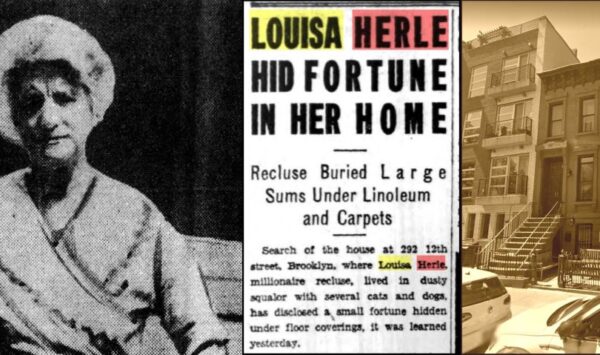
******************************************************************************************************************************** Brownstone Detectives investigates the history of our clients’ homes. The story you are about to read was composed from research conducted in the course of one of those investigations. Do you know the history of YOUR house? ******************************************************************************************************************************** Does a small fortune lie secreted away within the walls of your brownstone? If you live in a certain Park Slope brownstone, you may want to start looking… THE FORTUNE AT NO. 292 12th STREET (The following story comes from the Friday, 2 November 1934 edition of the Home Talk section of The Brooklyn Eagle newspaper.) She died as she had lived—alone. Miss Louisa Herle, 74-year-old wealthy recluse, of No. 292 12th St., was the Hetty Green of South Brooklyn, and although she slept on a dilapidated leatherette lounge in her kitchen, she left a fortune of $1,500,000. The dead body of the aged spinster was found lying on the lounge Wednesday, where it had lain for three days. She had removed her shoes before she lay down, and her stockings had been placed over the arm of a rocking chair. In the squalid two rooms on the street floor of the old brownstone house, Miss Herle had lived since 1916, when her brother had died. Following his death she closed the upper floors of the-house, and the rooms, inches deep in dust, and piled high with broken furniture, had never been opened since. Three heavily barred doors led into the living room where an old fashioned safe stood. Miss Herle, […]
THE DUKE OF No. 210 ST JOHNS PL (1907)
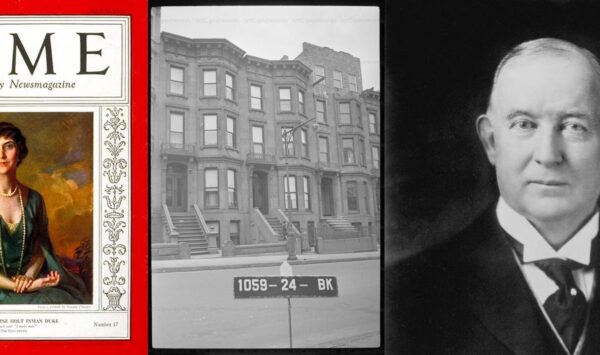
******************************************************************************************************************************** Brownstone Detectives investigates the history of our clients’ homes. The story you are about to read was composed from research conducted in the course of one of those investigations. Do you know the history of YOUR house? ******************************************************************************************************************************** In 1907, a quiet wedding took place on a sleepy Brooklyn block in one of its august brownstones. It was no ordinary wedding, however. For the ceremony was about to join a young widow of the borough to one of the most successful businessmen of the country – and one of its most ruthless trust violators – the “Tobacco King.” THE ROBBER BARON CORNERS TOBACCO James Buchanan Duke, whose name was “lent” to the North Carolina university in exchange for part of a hefty $40M endowment, was known as the “Tobacco King” for his aggressive cornering of the American tobacco market in the late 19th century. Duke not only brought the American tobacco industry to its knees, but he also knew the importance to the future of the cigarette industry was in its automation; he, thus, obtained the license to the first automated cigarette making machine which brought a speedier production line as well as lower costs to his companies and, in extension, the entire cigarette industry. By 1890, Duke supplied 40% of the American cigarette market and, in the same year, consolidated control of his four major competitors under one corporate entity, the American Tobacco Company. This formed a monopoly giving him control of more than 90% of the American […]
DODIE VAN PELT & THE FROZEN ROOSTER (1888)
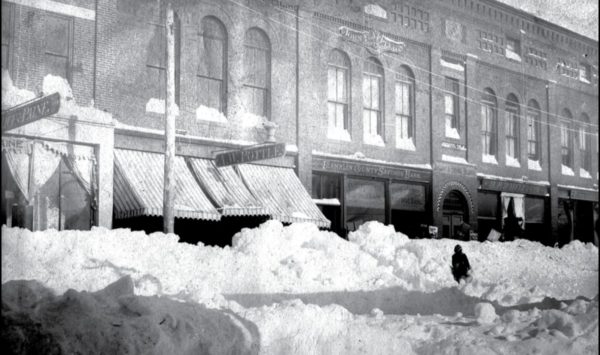
******************************************************************************************************************************** Brownstone Detectives investigates the history of its clients’ homes. The story you are about to read was composed from research conducted in the course of one of those investigations. ******************************************************************************************************************************** The following story appeared in a 1944 edition of the Brooklyn Daily Eagle, although this apocryphal tale likely appeared in many other editions of many other newspapers. It is an urban legend – one that explains an historical event in terms that would help the modern-day reader understand – concerning the all encompassing nature of the Great Blizzard of 1888. DODIE VAN PELT AND THE FROZEN ROOSTER “Dodie Van Pelt flung wide open his door and stamped out into the clear frosty night. Three days in his Park Slope mansion had put him in a fine temper. A hearty 60, he chafed and ranted at the howling wind and blinding snows which had kept him indoors from his work. “So on this night of March 15, 1888, when the velocity of the wind had diminished, Dodie walked down the hill and into the street. “He breathed the air so full of ozone and grumbled bitterly about the lost three days as he passed between the huge drifts of snow that bordered the roadway and towered 20 feet above his head. Halfway down the hill he paused, attracted by a forlorn rooster buried to its neck in a snow mound. “Grunting he knelt to lift it and found himself stroking the weather vane atop the First Unitarian Church. (“The Story […]
HOW ART DECO CAME TO PARK SLOPE (1931)
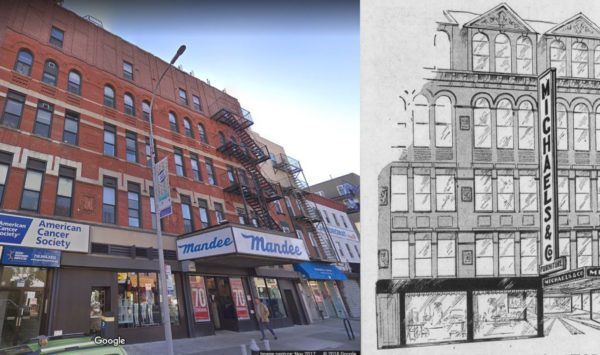
******************************************************************************************************************************* Brownstone Detectives investigates the history of our clients’ homes. The story you are about to read was composed from research conducted in the course of one of those investigations. Do you know the history of YOUR house? ******************************************************************************************************************************* Up until the 1930s, everything in Park Slope was Victorian brownstone. But then came Michael’s and the revelation of a stunning Art Deco facelift. ART DECO IN THE HOUSE For those of you familiar with 5th Avenue in Brooklyn, you may be acquainted with the 5-story building with storefronts known as Nos. 503-505. Currently housing Urban Market of Park Slope, the entire floor was at one time taken over with bedroom sets, kitchen tables, and dinettes – a furniture store known as Michael’s & Co. Originally, the building – sitting between 12th and 13th streets – had quite a different look – a product of the Queen Anne/Romanesque architectural period in the late 1800s, its top floor was lined with faux gables and a mansard roof. By the 1930s, a vertical sign and a marquee had been added to the facade, both with the Michael’s name. Today, of course, Michael’s is no more and all of the Victorian architectural features toward the top of the building (as well as the Michael’s signs) have been removed – probably as much out of an extreme aversion to the cost of maintaining such a facade as due to some of extreme economic periods the building’s passed through. Nonetheless, its current facade is rather unremarkable, […]
THE NAVY BICYCLE SQUAD OF BROOKLYN (1897)
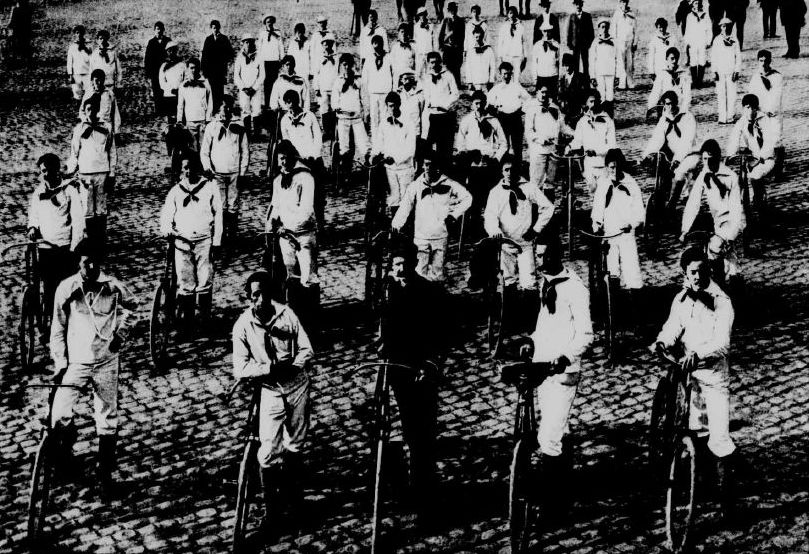
******************************************************************************************************************************** Brownstone Detectives investigates the history of our clients’ homes. The story you are about to read was composed from research conducted in the course of one of those investigations. Do you know the history of YOUR house? ******************************************************************************************************************************** Boy! But the Navy sure knew how to get around back in the day! These “wheelmen” – resplendent in their military uniforms – were organized not just for play, but for work. As bicycling was as much of a past time then as it is today, these men likely rode not only for their enjoyment, but to travel from station to station, as well – also representing the Navy in bicycling races. Headquartered at 56th Street in Brooklyn, the Second Naval Battalion was organized just before this picture was taken in July of 1897. It performed duty for the state during the Spanish-American war on coast signal service, guarding mine fields at Willets Point, in Queens, and on patrol duty in New York harbor aboard various vessels. From the New York Tribune of 4 July 1897, we have pictured above, “the first meet of the Bicycle Squad of the 2nd Naval Battalion at the Memorial Arch (Grand Army Plaza) in Brooklyn.” Follow @BrownstoneDetec Share ———————————————————————————————————————– The Brownstone Detectives Brownstone Detectives is an historic property research agency. Our mission is to document and save the histories of our clients’ homes. From our research, we produce our celebrated House History Books and House History Reports. Contact us today to begin discovering the history […]
CSI: MURDER ON THE PARK SLOPE? (1893)
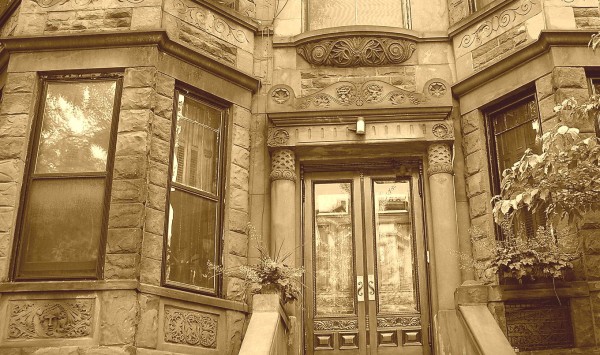
******************************************************************************************************************************** Brownstone Detectives investigates the history of our clients’ homes. The story you are about to read was composed from research conducted in the course of one of those investigations. Do you know the history of YOUR house? ******************************************************************************************************************************** When a badly decomposed body was discovered in the basement of a tony Park Slope brownstone, two of Brooklyn’s best detectives were put on the case. THE SETTING “Thomas Dempsey a retired merchant, who lives with his young wife and mother in law in a handsome brown stone house at 248 Garfield place, near Eighth avenue, rushed into the Bergen street police station in a fluster late yesterday afternoon,” reported the Brooklyn Daily Eagle, declaring “that he had just found his servant Edith lying dead in the basement of the laundry.” Dempsey was in an anxious state, the paper noted, observing that he wanted “the body removed without delay as it was badly decomposed and also to have the fullest investigation possible made by the police.” THE WEEK BEFORE THE DISCOVERY Mr. Dempsey, with his wife and mother in law, departed for a vacation trip to Asbury Park on 9 August 1893. They left the house and a pet pug dog in charge of Edith Moe, “a middle aged genteel looking woman” of 35, who was “of a very nervous disposition and who seemed dreadfully afraid to let her friends know that she was living out.” Mr. Dempsey’s mother-in-law, it was learned, had hired Edith, so Mr. Dempsey did not know […]
THE PSYCHE OF 192 ST. JOHN’S PL. (1889)
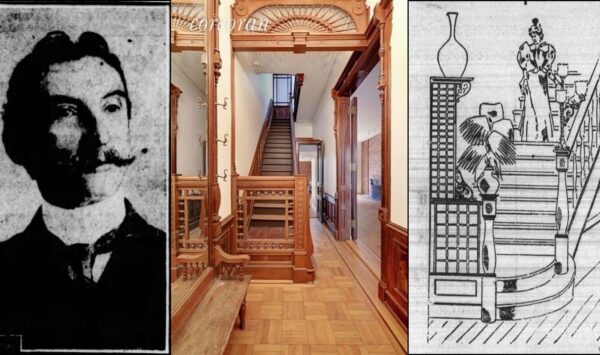
******************************************************************************************************************************** Brownstone Detectives investigates the history of our clients’ homes. The story you are about to read was composed from research conducted in the course of one of those investigations. Do you know the history of YOUR house? ******************************************************************************************************************************** Starting in the late 1880s, the Brooklyn Daily Eagle started a series of articles which described – in great length and detail – the interiors of individual newly-built or renovated houses. These houses were usually brownstones belonging to those affluent or upper-middle-class members of society. Not only did such articles describing the interiors of neighbors’ homes sell newspapers, but the articles also served as advertising directed at those in the market for a townhouse who wanted a home of their own. These advertisement-articles were placed, likely at the expense of the designers responsible for the “interior decorations” being described, as each piece often ended with what readers wanted to know: “Who did the work?” “THE WORK WAS DONE BY A. KORBER” Albert Korber, who went by “A. Korber,” was an architect and designer who settled in Brooklyn at the age of 15. Three years later he “started business on Adams street as a manufacturer of picture frames and moldings. Several years later he founded the decorating business which bears his name, with showrooms on Montague street and a factory for the manufacture of interior woodwork and furniture in South Brooklyn.” By 1889, Korber was 42, a successful decorator throughout the City of Brooklyn. Although he was held in high esteem for […]
THE SNATCHING OF ST. JOHN’S STOOPS (1970)
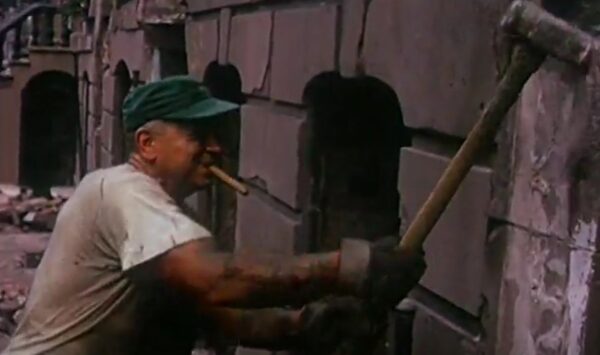
******************************************************************************************************************************** Brownstone Detectives investigates the history of our clients’ homes. The story you are about to read was composed from research conducted in the course of one of those investigations. Do you know the history of YOUR house? ******************************************************************************************************************************** In the 1970s, a row of stoops belonging to St. Johns Place brownstones were destroyed. You may notice them today as you walk down St. Johns Place and wonder at the stoop-less brownstones and wonder why they look so much like brownstone, but – for some reason – cannot be. These Victorian brownstones on the north side of St. John’s Place between 5th and 6th avenues – Nos. 35 to 67 – were, at that time, in an extremely derelict state. A part of the slums of the Park Slope section of Brooklyn, they were being transformed into working class housing, apartments for low-income families. A part of the conversion of these brownstones to apartments was the removal of their stoops. This extreme adjustment to the façades of these buildings had the benefit of allowing them to have just one entrance – on the ground level – through which all apartment dwellers would access their apartments. If you ever wondered what that destruction looked like, you’re in luck! In this short amateur film, these stoops can be seen being systemically removed from the fronts of their brownstones. The film is in color, lasts approximately seven minutes, and gives a taste of 1970s Park Slope. Follow @BrownstoneDetec Share ———————————————————————————————————————– The Brownstone Detectives […]
“MORALS OF MINNIE” ON GARFIELD PL. (1912)
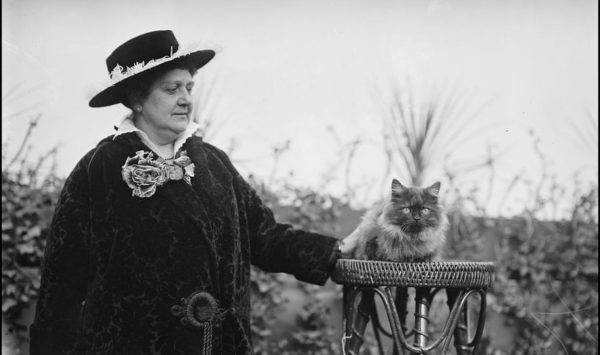
******************************************************************************************************************************** Brownstone Detectives investigates the history of our clients’ homes. The story you are about to read was composed from research conducted in the course of one of those investigations. Do you know the history of YOUR house? ******************************************************************************************************************************** In 1912, a Park Slope cat named Minnie found herself in some hot water. According to a complaint, Minnie’s claws had allegedly performed some serious mutilation to a neighbor’s roof. Here, now, are the details of: THE CURIOUS CASE OF THE CAT THAT CLAWED Location – Garfield Place (between 6th and 7th avenues). Suspect’s address – No. 182 Garfield Place, the Inasmuch Home for Aged Women. Claimant’s address – No. 178 Garfield Place, home of one William Albert Robbins, attorney. Suspect – one “Minnie,” a white Persian, and allegedly “immoral,” cat. THE WANDERINGS OF THE “INASMUCH” Around 1909, the Inasmuch Home for Aged Women moved from its previous location on Bergen Street to its new home at No. 182 Garfield Place in Park Slope between 6th and 7th Avenues. The Inasmuch (sometimes referred to as the “In-As-Much” by sloppy journalists) was a “charity” home for “aged women who are unable to get into other homes,” run through contributions and donations. It was founded in 1905, a few years before the move to Garfield Place. At that time, it existed in the Gowanus at No. 390 Douglass Street, and later moved to (what would become) the Boerum Hill section at No. 226 Bergen Street. By 1920, when it was finally closed, the […]
HOOCH RAID IN A PARK SLOPE SLUM (1922)
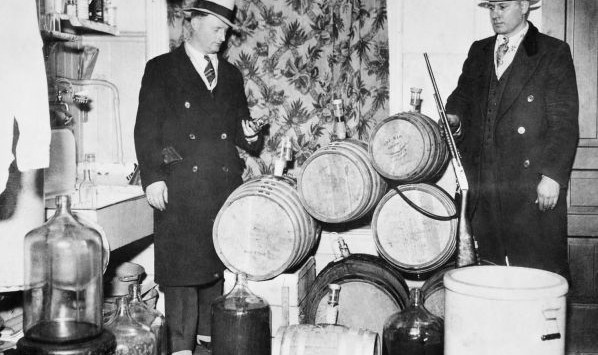
******************************************************************************************************************************** Brownstone Detectives investigates the history of our clients’ homes. The story you are about to read was composed from research conducted in the course of one of those investigations. Do you know the history of YOUR house? ******************************************************************************************************************************** Everybody was “thirsty” in 1922. Not everyone, though, wanted to pay the price of the drink. While the wet laws during the 1920s were none too popular with many Brooklynites, most of these residents, for safety reasons, though, did not want the hooch being made under their own roof. As a result, there was no shortage of citizen reports to the police of active neighborhood mash stills. Even in the slums of Park Slope. A CASE IN PARK SLOPE One of these stills was “uncovered in a flat occupied by Daniel Beshara, at 721 Union street” where it was discovered that the hooch was being made in a makeshift still in the middle of the night. Not only illegal, the operation, powered by open flames, was also dangerous. Beshara and his cousin, James Pamperi, who also lived in the building, were arrested in the act of producing mash. “In the Pamperi home were found fourteen barrels of mash,” claimed the Brooklyn Standard Union newspaper. “That dwellers in the tenements are becoming aroused over the fire peril is shown by the great number of complaining letters which have been sent” to the district attorney, demanding that he stamp out these “moonshine dens.” ASST. D.A. SNYDER TO THE RESCUE In a grand response […]